March 9, 2023
by Ellen Park
After leaving Port Suape, Brazil on March 6th, we finally arrived at our first station at approximately 20:00 on March 8th. During transit, we were able to finish setting up equipment, complete trainings, and adjust to our work shifts. We also spent time decorating the GO-BGC Argo floats for the Adopt-a-Float program.
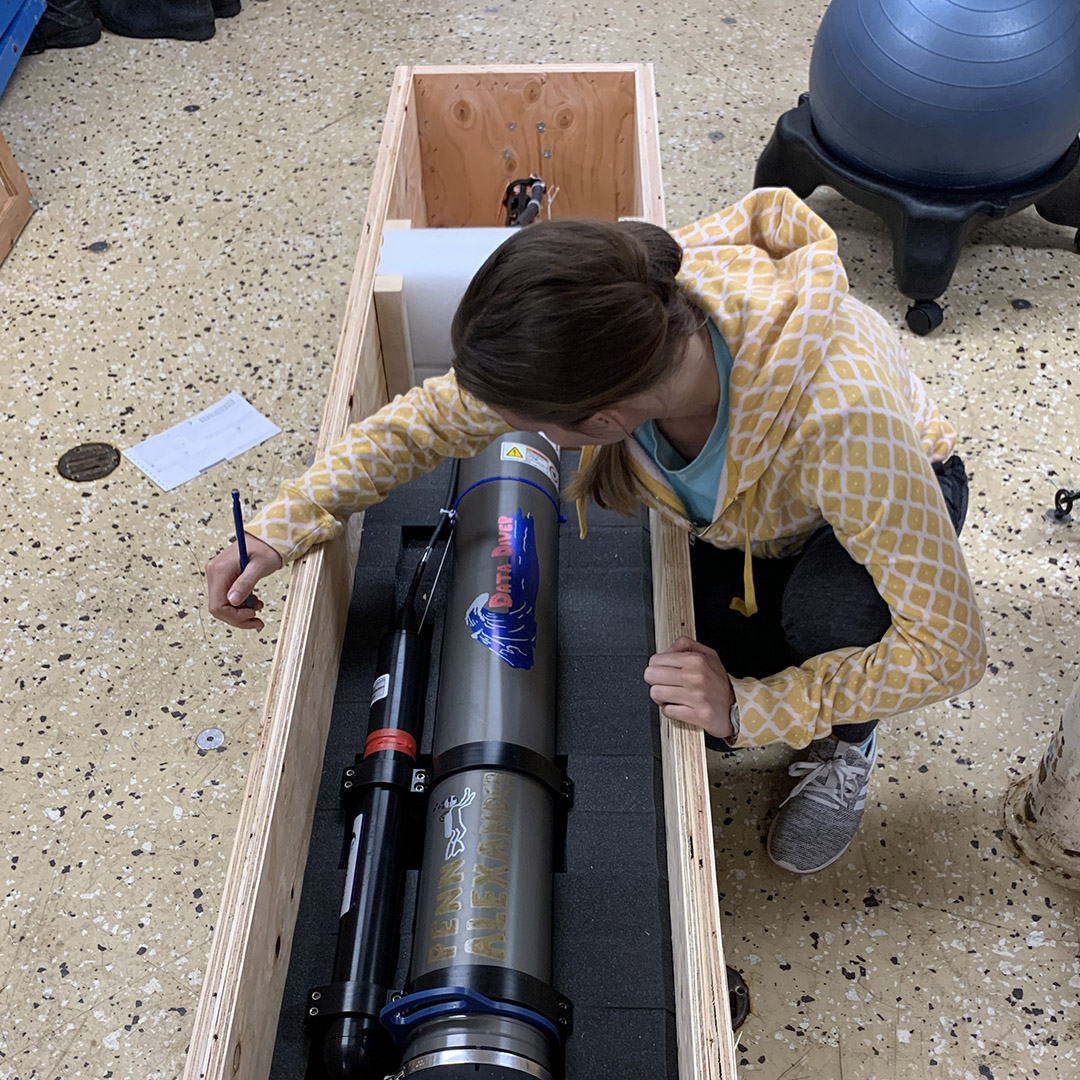
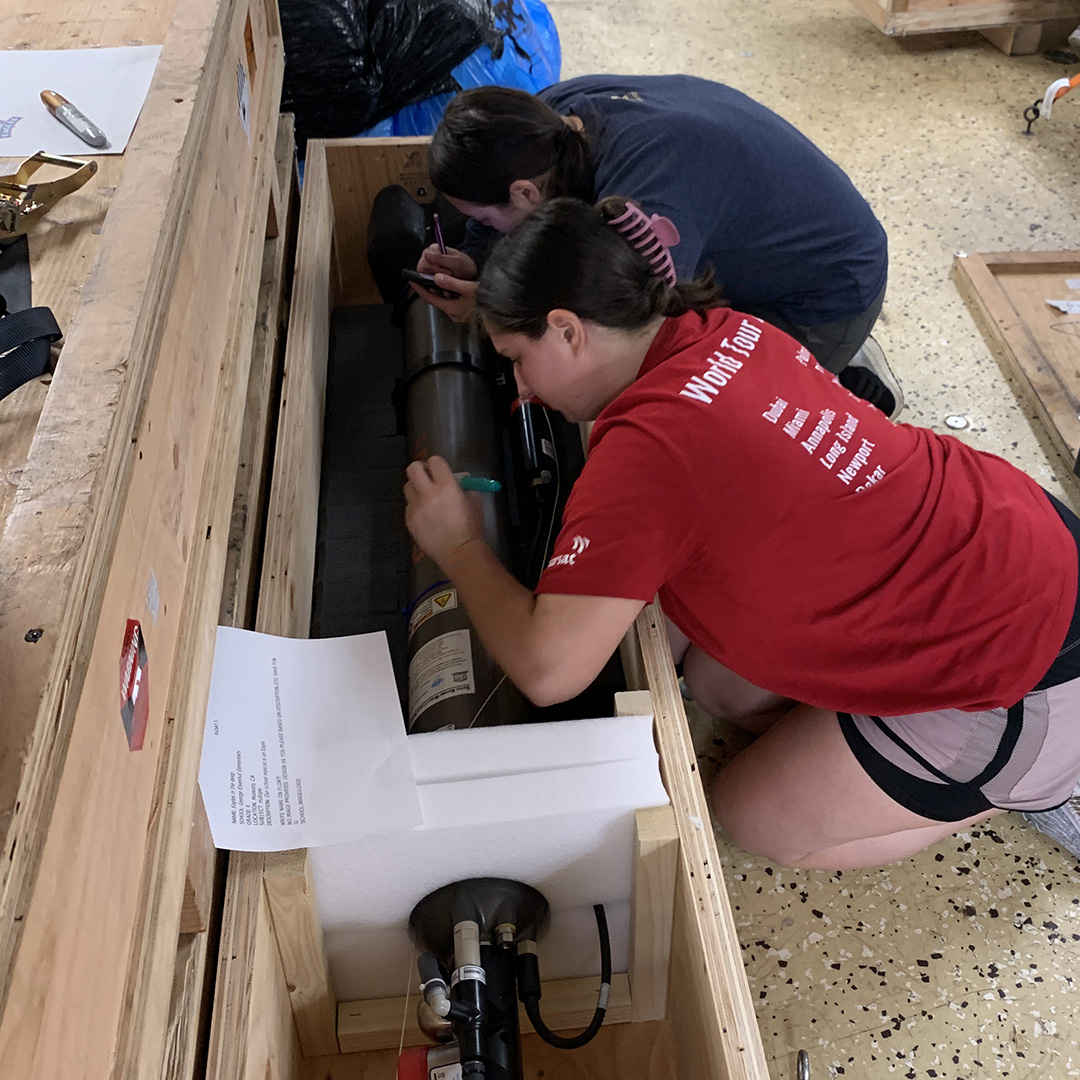
Argo floats are autonomous, drifting, profiling floats that are deployed throughout the global oceans. Core Argo floats are equipped with temperature, salinity, and pressure sensors. Biogeochemical, or BGC, Argo floats are equipped with the same sensors as Core Argo floats with the addition of an array of biogeochemical sensors, such as oxygen and pH sensors. Both types of floats drift at 1000m depth. Every 10 days, these floats dive to 2000m, and then make measurements of the water column as they ascend to the surface. The data collected is then transmitted via satellite and made publicly available within 24-48 hours.
These floats are important for helping increase the number of oceanographic observations across both space and time. As you may or may not know, the ocean covers approximately 70% of the Earth’s surface and has an average depth of approximately 12,000 ft (3,700 m). As a result, one of the greatest challenges in ocean sciences is actually observing the ocean (making a sufficient number of measurements across the surface, depth, and time to understand various ocean processes and having sensors that can withstand the harsh conditions to successfully make these measurements).
Ship-based measurements, like the ones we are making on this cruise, are invaluable. However, they are very costly, time intensive, and typically result in a set of measurements made at one location at a specific time. As a result, it is hard to understand how the ocean changes throughout the year at these locations without utilizing other observational platforms such as floats, which can make measurements in the area without human supervision and for a much lower cost. Ultimately, we need to use an array of observational platforms to understand oceanic processes, and Argo floats are a crucial part of this array.
Four BGC and 3 Core Argo floats will be deployed on Leg 1 of this cruise. All of the BGC Argo floats have been adopted and named by students from classrooms around the world. Based on the information provided, scientists from both the day and night shifts decorated the four floats that will be deployed on this leg during transit (Lucille, Climate READY Ambassador, Eagles in the Deep, Data Diver). People were excited and eager to help out with this outreach program. It was also a good learning experience for those involved, because while many scientists have heard about BGC-Argo and use their data, not everyone has had the opportunity to see a float in-person before.
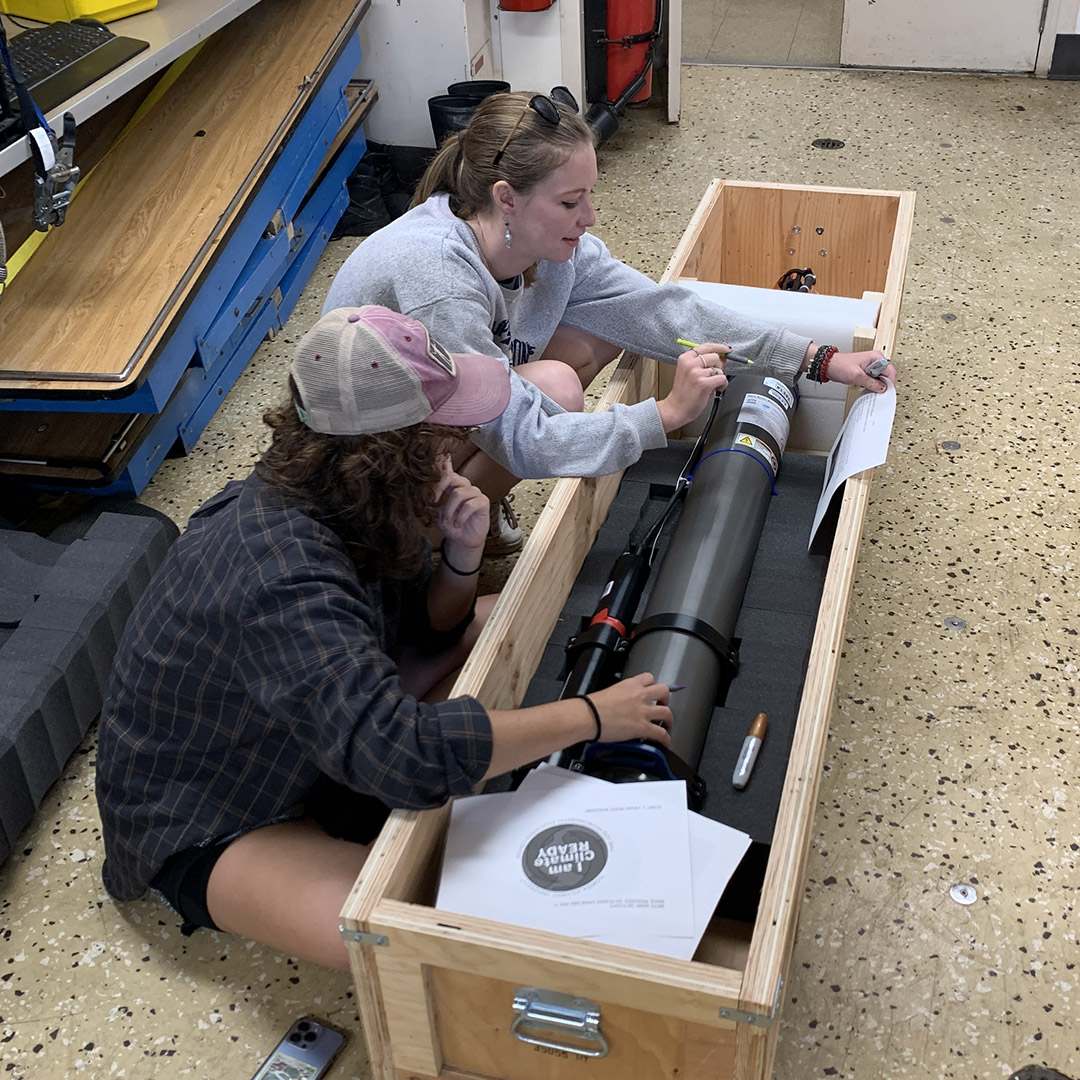
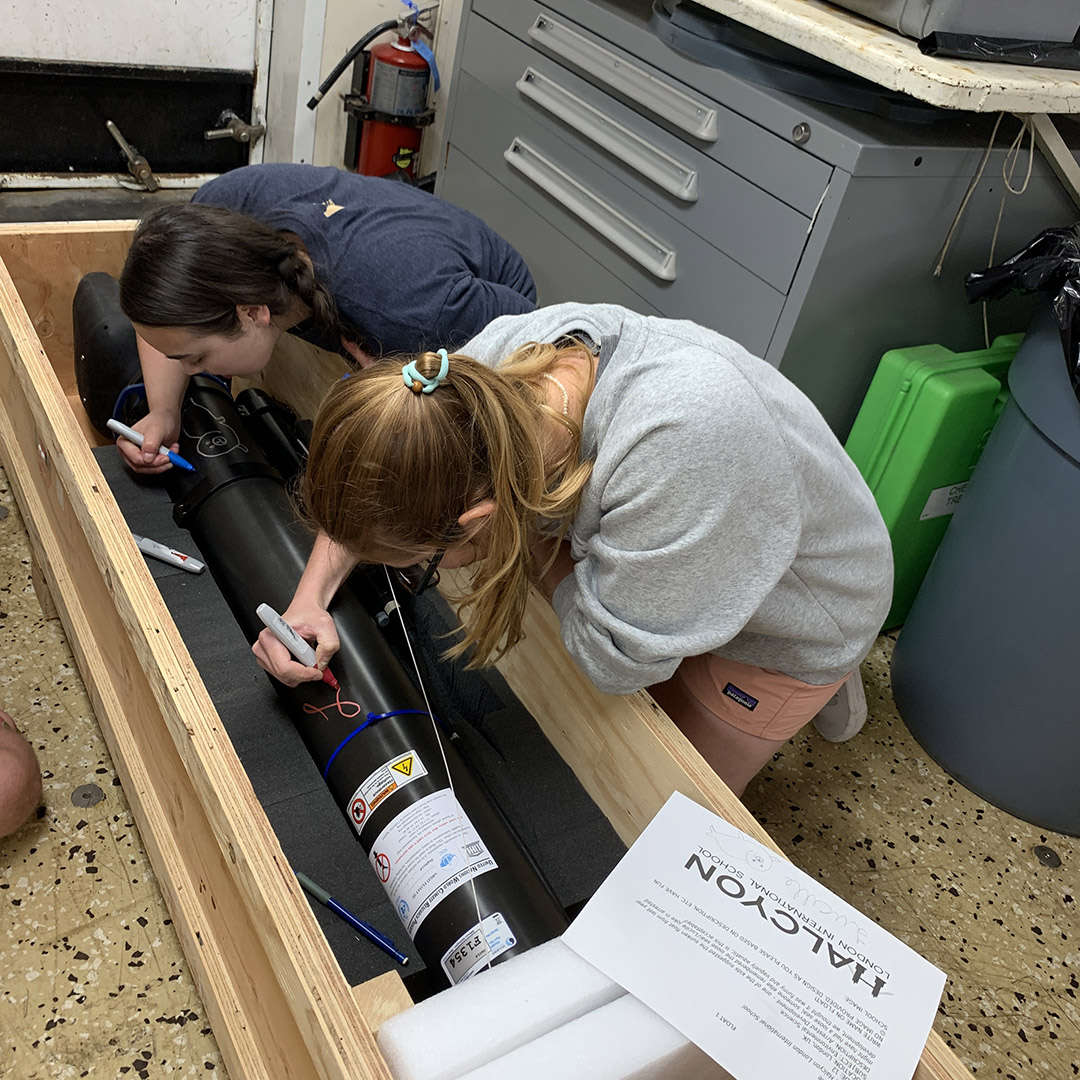
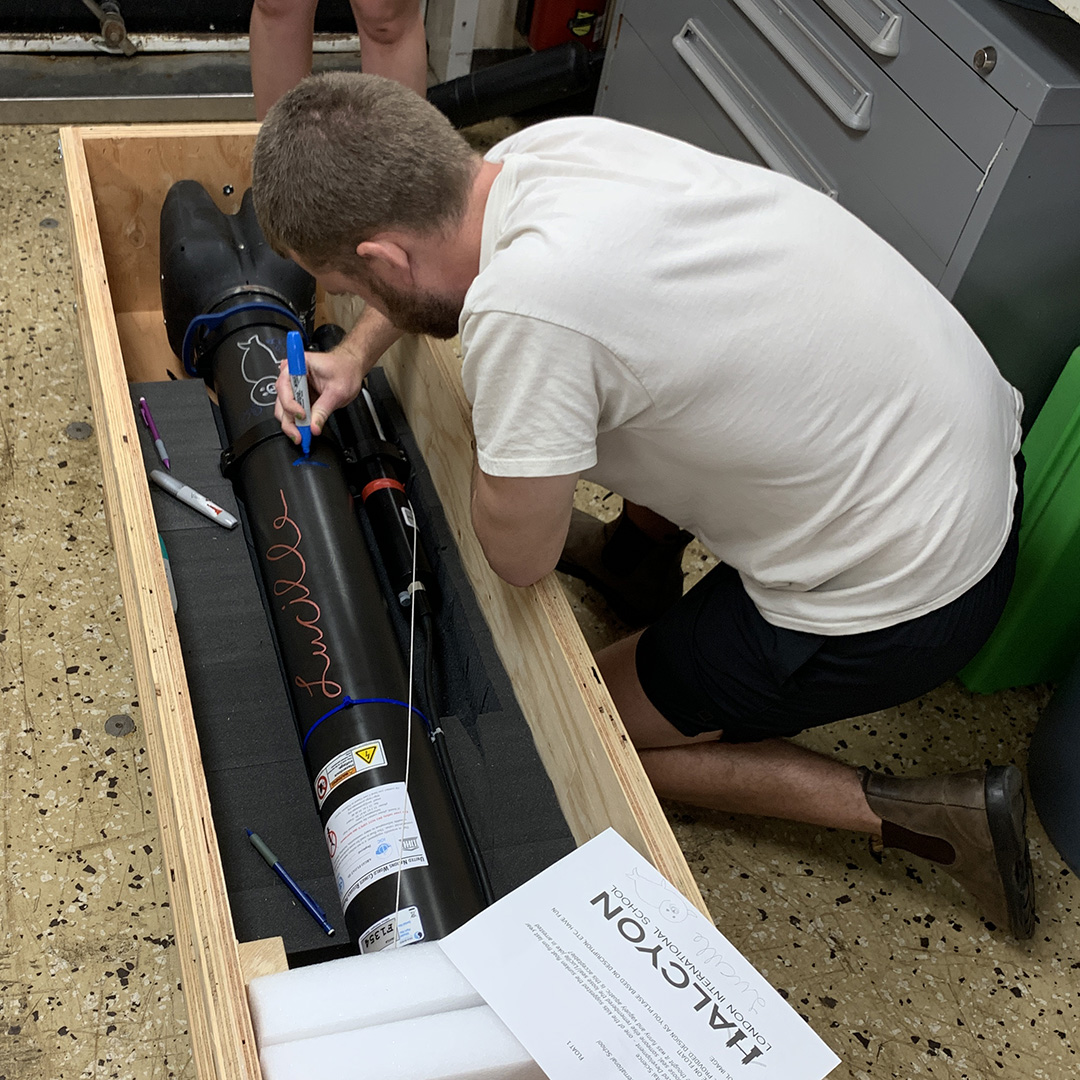
Stay tuned to see all of the fully decorated floats and hear more about the upcoming deployments!
